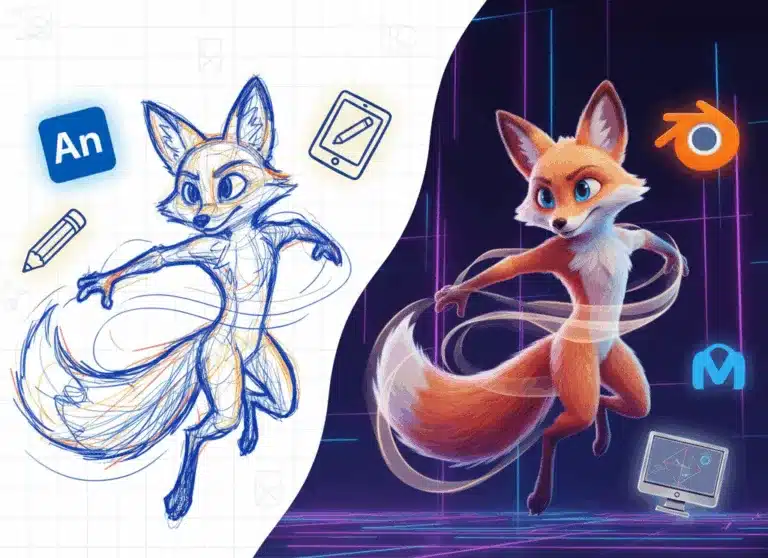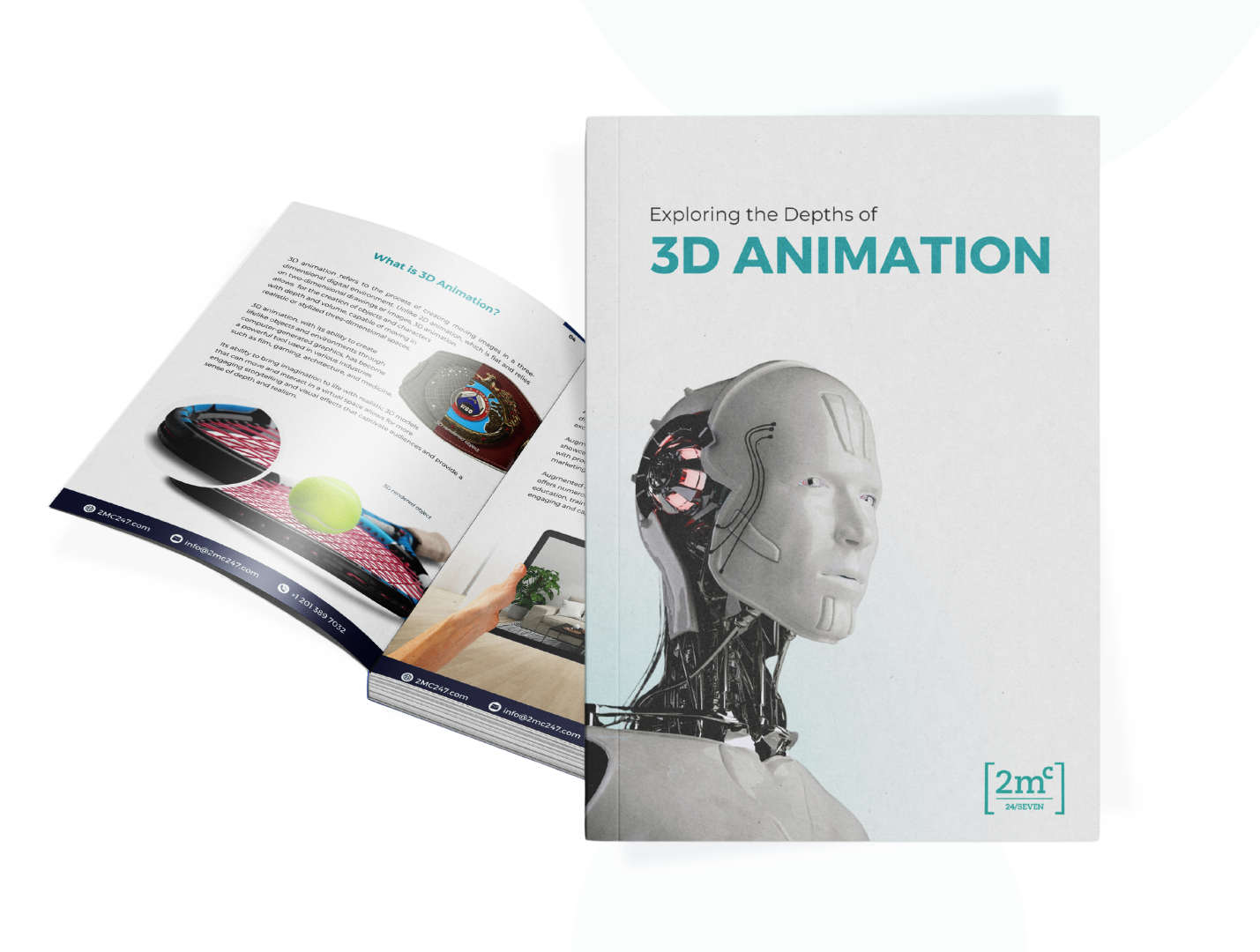In today’s fast-paced and highly competitive business landscape, standing out from the crowd is no longer just a desire, but a necessity.
With an increasing number of businesses vying for attention, it has become crucial to find ways to capture the interest and imagination of your target audience.
Fortunately, graphic design is one way for businesses to capture and convert their target audience.
Graphic design goes beyond mere aesthetics; it is an essential element in building a brand image and promoting businesses in the modern world.
It plays a vital role in effectively conveying messages, informing and educating potential customers, as well as persuading them to take action. By establishing a connection between company values and products or services, graphic design helps create credibility and trust with the audience.
Moreover, it enhances visibility by making businesses more memorable amidst the sea of competitors.
With all these benefits combined, investing in professional graphic design services becomes not just an option but a strategic move for business growth and success.
Brief Overview of Graphic Design
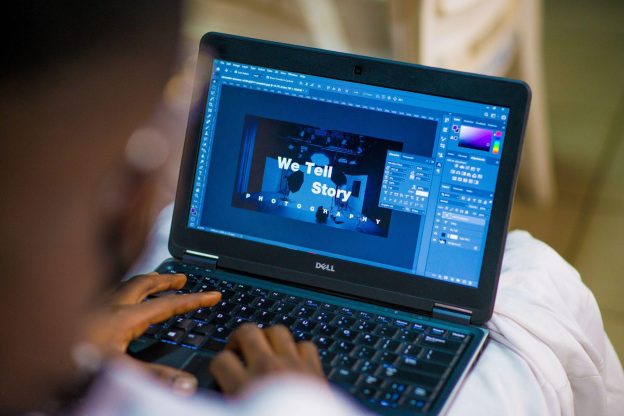
Graphic design plays a crucial role in modern business success by creating visually appealing marketing materials, such as logos, mobile apps, and social media pages, that effectively inform, educate, and persuade the target audience.
Over the years, graphic design has evolved significantly due to advancements in technology. The introduction of computers and software programs has revolutionized the way designers create and manipulate visual elements. This evolution has not only made the design process more efficient but also opened up new possibilities for creativity.
Additionally, with the increasing popularity of digital platforms and online marketing, graphic design has become even more important in capturing the attention of potential customers.
Why You Need Graphic Design
Your First Impression Counts
Just as it is with people, in the world of business, first impressions are important. They are the foundation upon which potential customers or clients form their initial judgments about your brand.
The way your business presents itself visually, particularly through graphic design, can significantly influence these impressions.
Picture this: You’re strolling through a crowded marketplace, and you come across two stalls. The first one has a vibrant, eye-catching display, with well-designed signage, clear branding, and visually appealing product images.
The second stall, on the other hand, is cluttered and lacks any visual appeal, with handwritten signs and a disorganized product arrangement. Which one are you more likely to approach? The answer is clear: the first one.

The same rules apply digitally. Your website or social media profiles are the stalls, and the users are your potential customers. In this context, your website’s layout, your social media posts, and your marketing materials are the equivalent of that vibrant marketplace display.
They represent the face of your business to the world, and they have a profound impact on how your prospects perceive your brand. Without a good graphics design team in place to ensure your logos and brand colors are aesthetic and unique, you might make a bad first impression on your prospective customers.
Being Consistent Builds Trust and Credibility
Consistency in design elements fosters trust and credibility, establishing a strong foundation for businesses to build meaningful connections with their target audience.
When a company maintains visual consistency across its marketing materials, it signals professionalism and reliability.
Consistent use of color schemes, typography, and graphic elements creates a cohesive visual identity that customers can easily recognize and associate with the brand. This consistency not only helps in creating a memorable brand image but also allows for effective communication with the audience.
Communicate Clearly and Easily
Importance of visual communication cannot be stressed enough in modern business practices. With the rise of digital media, attention spans have shortened significantly, making it essential for businesses to convey their message quickly and concisely.
Effective graphic design plays a key role in achieving this goal by using visuals to tell a compelling story that captures the audience’s attention.
Visual storytelling has become an integral part of marketing strategies, as it allows businesses to engage with their target audience on a deeper level.
By incorporating images, colors, typography, and other design elements strategically, graphic designers can create visual narratives that evoke emotions and resonate with potential customers. This not only helps in conveying complex ideas more easily but also leaves a lasting impression on viewers.
To achieve clear communication through design, understanding and applying fundamental design principles is crucial. These principles include balance, hierarchy, contrast, alignment, repetition, and space utilization. By adhering to these principles, graphic designers can ensure that their designs are aesthetically pleasing while effectively conveying the intended message.
Furthermore, staying up-to-date with current graphic design trends is essential for businesses looking to make an impact in today’s competitive market.
Trends such as minimalism, flat design, bold typography choices, vibrant color palettes are constantly evolving; therefore keeping abreast with these trends allows businesses to stay relevant while maintaining a fresh and contemporary image.
Originality Suppresses the Competition
In today’s competitive market, the ability to create unique and innovative designs gives businesses a significant edge in capturing audience attention and standing out from their competitors.
In a world saturated with countless products and services, originality becomes essential to suppress the competition.
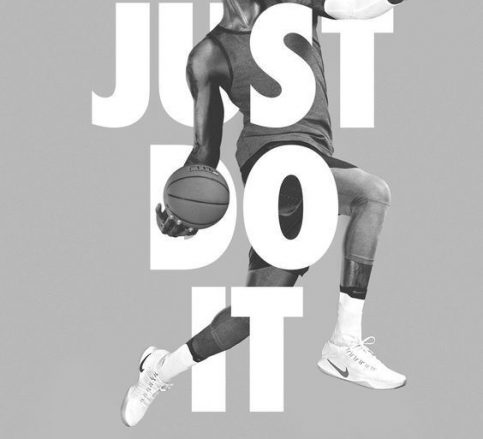
By embracing creative differentiation, businesses can establish a unique branding that distinguishes them from others in their industry. Rather than imitating what already exists, original graphic design allows companies to showcase their distinct personality and values, ultimately attracting customers who resonate with their brand.
With originality comes a competitive advantage that cannot be easily replicated.
Unique graphics and designs have the power to captivate audiences, making them more likely to remember and engage with a business.
By presenting an unconventional visual identity, companies can break free from the conformity of traditional marketing materials and leave a lasting impression on potential customers. This not only helps in building brand recognition but also sets the stage for establishing trust and loyalty among consumers.
How You Share Your Message Matters
The manner in which a message is conveyed holds significant importance in determining its effectiveness and impact on the target audience.

In the realm of graphic design, aesthetics play a crucial role in capturing the attention and interest of viewers. The visual elements used, such as images, illustrations, and layout, contribute to creating an appealing and visually engaging experience for the audience.
This emphasis on aesthetics allows businesses to stand out from their competition by presenting their message in a unique and memorable way.
Visual storytelling is another powerful tool within graphic design that can greatly influence how a message is perceived.
By using images and graphics to tell a story, businesses can evoke emotions, create connections with their audience, and effectively communicate their brand values.
Typography also plays a vital role in conveying messages effectively. The choice of fonts can reflect the personality of the brand or convey specific emotions or attitudes. It helps establish visual consistency across various marketing materials while enhancing readability and comprehension.
Understanding the importance of aesthetics, embracing visual storytelling techniques, utilizing typography effectively, leveraging color psychology principles, and implementing strong visual hierarchies are all essential components for successful graphic design.
These elements not only capture attention but also leave lasting impressions on audiences by conveying messages creatively and engagingly.
Incorporating these aspects into marketing materials allows businesses to connect with consumers at a deeper level while standing out amidst competition, ultimately leading to increased brand awareness, customer loyalty, and ultimately, higher sales and business growth.
What is The Role of a Graphic Designer?
The role of a graphic designer is multifaceted, encompassing various key points.

Creating Visual Brand Identity
Firstly, they play a crucial role in creating visual brand identity by designing logos and marketing materials that effectively represent the business and differentiate it from competitors.
Creating a visual brand identity is like designing the face of a business, where every element comes together to convey its unique personality and leave a lasting impression.
Visual branding strategies play a crucial role in shaping how businesses are perceived by their target audience.
One key aspect of visual branding is logo design, which holds immense importance in building brand recognition.
A well-designed logo serves as the visual representation of a company and helps establish its identity in the market. It not only distinguishes the business from its competitors but also acts as a symbol that customers can associate with the products or services offered.
To stay relevant and competitive in today’s fast-paced business world, it is essential for companies to keep up with graphic design trends.
These trends encompass various elements such as color schemes, typography choices, and overall design aesthetics that resonate with current consumer preferences. By incorporating these trends into their visual branding strategies, businesses can create an appealing and contemporary image that captures the attention of their target audience.
By investing in professional graphic design services, businesses can build trust and credibility among consumers.
Professionally designed graphics and images create a positive impression on potential customers and enhance brand perception. This increased visibility ultimately leads to higher conversion rates and revenue generation for businesses.
Enhancing Communication with Customers
Enhancing communication with customers involves utilizing effective visual branding strategies and incorporating creative designs and informative graphics to convey ideas and information in a visually engaging manner.
Building relationships and customer engagement are crucial for business success, and graphic design plays a pivotal role in achieving these objectives. By employing visually appealing elements such as colors, typography, and imagery, businesses can capture the attention of their target audience and create a lasting impression.
Building Trust and Credibility
Building trust and credibility in the hearts of consumers is crucial for long-term success, as it establishes a positive relationship that fosters loyalty and encourages repeat business.
In the competitive landscape of modern business, where customers have countless options to choose from, businesses need to go beyond simply selling products or services.
They need to connect with their target audience on a deeper level and create a sense of trust. This is where graphic design plays a vital role.
By using carefully crafted designs, businesses can convey their values, mission, and unique selling propositions in a visually appealing way. A well-designed logo or marketing material can instantly communicate professionalism, attention to detail, and reliability, which are all important factors in building trust.
Consumer perception is heavily influenced by visual elements. When customers see consistent branding across different platforms such as websites, social media pages, and promotional materials, it creates a sense of familiarity and reliability.
Consistency in visual design not only enhances brand reputation but also reinforces the message that the business wants to convey.
Support Marketing Efforts
Today, it is crucial for companies to stand out from their competitors and grab the attention of potential customers. Graphic design plays a vital role in this process by supporting marketing campaigns through visually compelling elements such as logos, advertisements, website designs, and social media graphics.
By incorporating graphic design trends and employing creative strategies, businesses can enhance their branding efforts and effectively convey their unique value proposition.
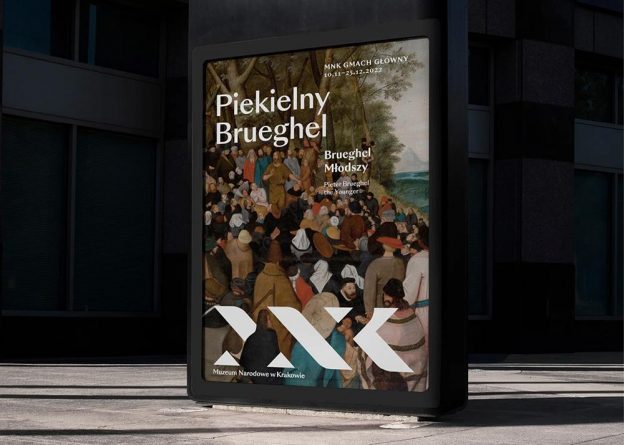
Visual storytelling is an essential aspect of modern marketing strategies, and graphic design plays a key role in bringing these stories to life. Through eye-catching visuals, businesses can tell a story that resonates with their target audience on an emotional level.
Whether it’s through captivating infographics or engaging videos, graphic design enables businesses to present complex information in a visually appealing and easily digestible manner.
Additionally, by utilizing various graphic design tools and techniques, companies can create cohesive brand identities that reinforce their messaging across different platforms.
Furthermore, effective graphic design supports branding strategies by creating memorable visual assets that leave a lasting impression on consumers’ minds.
Web Design and User Experience
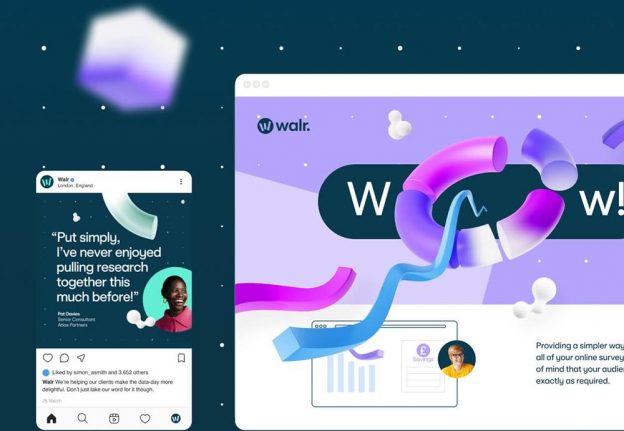
Web design is the architectural blueprint that guides users on a seamless journey through the digital landscape, ensuring their experience is smooth and engaging. It encompasses various elements such as user interface design, responsive design, mobile optimization, and conversion rate optimization.
In today’s fast-paced digital world, web design trends are constantly evolving to meet the ever-changing needs and preferences of users. Designers strive to create visually appealing websites that not only capture attention but also provide a user-friendly experience.
User interface design plays a crucial role in web design as it focuses on creating intuitive and interactive interfaces that enable users to navigate effortlessly through the website. This involves designing clear navigation menus, well-organized content layouts, and strategically placed call-to-action buttons to guide users towards desired actions.
Additionally, responsive design ensures that websites are optimized for different devices and screen sizes, allowing users to have a consistent experience across desktops, tablets, and smartphones.
Product Packaging

Just as web design creates a digital experience for users, packaging design creates a tangible and visually captivating experience for consumers. It plays a vital role in product differentiation, visual storytelling, consumer perception, and staying up-to-date with packaging design trends.
When it comes to product differentiation, effective packaging design can set a brand apart from its competitors.
A well-designed package not only catches the eye but also communicates the unique qualities of the product within. Through creative use of fonts, colors, imagery, and shapes, packaging designers can create an enticing visual narrative that resonates with consumers on an emotional level.
Moreover, consumer perception is heavily influenced by packaging design. Research shows that consumers form initial judgments about a product within seconds of encountering its package.
The visual appeal and functionality of the package shape their expectations and influence purchasing decisions. Packaging must align with the target audience’s preferences and convey value through aesthetics and functionality.
To stay relevant in this dynamic field, businesses need to be aware of current packaging design trends. From minimalist designs that exude simplicity and elegance to bold patterns that grab attention on store shelves – keeping up with these trends ensures that brands remain visually appealing to consumers.
Lastly, sustainable packaging has emerged as an increasingly important consideration for both businesses and environmentally-conscious consumers.
With rising awareness about environmental issues such as plastic pollution, customers are seeking products packaged in eco-friendly materials or those offering recyclable options. Incorporating sustainability into packaging design not only showcases corporate responsibility but also appeals to conscious consumers who prioritize ethical consumption.
Product packaging is far more than just a means to transport goods; it serves as a powerful tool for branding and marketing efforts.
By focusing on product differentiation, visual storytelling, consumer perception, staying updated with packaging design trends, and embracing sustainable practices, businesses can harness the potential of packaging design to captivate their target audience and enhance their overall success.
Consistency
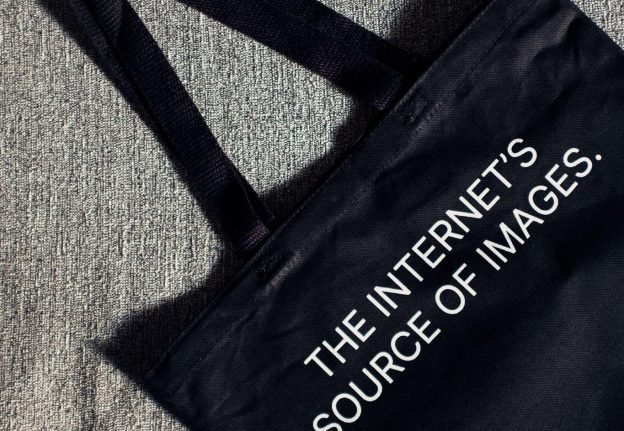
Consistency in the visual elements of a brand, such as color palette, typography, and imagery, plays a crucial role in establishing brand recognition and fostering consumer trust. When consumers encounter consistent branding across different platforms and touchpoints, they develop a sense of familiarity and reliability with the brand.
Consistency in branding allows businesses to create a cohesive identity that is easily recognizable and memorable. This consistency helps to reinforce the brand’s messaging and values, effectively communicating its unique selling propositions to the target audience.
Typography choices are an essential aspect of maintaining consistency in graphic design. The typeface selected for a brand’s logo or marketing materials should reflect its personality while being legible across different mediums. Consistently using specific fonts helps build recognition among consumers over time.
What does it cost?
The cost of professional graphic design services varies depending on factors such as the complexity of the project, the level of expertise required, and the specific needs of the business. Cost analysis plays a crucial role in determining whether investing in graphic design is financially feasible for a company.
Before embarking on any design project, businesses should consider conducting a thorough ROI calculation to assess the potential return on investment. This involves evaluating how much revenue or customer acquisition can be attributed to effective graphic design.
Additionally, budget planning is essential to allocate resources efficiently and ensure that graphic design expenses align with overall financial goals.
Pricing strategies employed by graphic designers also impact the cost of their services. Some designers charge hourly rates, while others may offer fixed package prices based on specific deliverables.
It is important for businesses to understand these pricing structures and negotiate accordingly to obtain a fair value for their investment in visual communication.
Graphic design services encompass a range of offerings, each with its own pricing based on factors such as complexity and scope. For instance, a basic logo design can cost around $250 to $500, while a more custom logo may range from $500 to $2,500.
Business card design, typically single-sided, can be priced between $50 and $200. If you’re considering flyer or brochure design, a basic design may fall in the range of $100 to $500.
For website design, a landing page might cost around $500 to $2,500, while a small business website with 5-10 pages could be in the range of $2,500 to $10,000.
Keep in mind that these are general estimates, and costs can vary depending on specific project needs and the experience of the designer. It’s advisable to have a detailed discussion with a designer to get an accurate quote for your project.
While there is no one-size-fits-all answer to what professional graphic design services will cost, careful consideration of factors such as project complexity and expertise required allows businesses to budget effectively and maximize their return on investment.
Graphic Design in Marketing
Effective visual communication plays a pivotal role in capturing the attention of consumers and driving business growth.
Graphic design, as a form of visual communication, has a profound impact on consumer behavior. Through the use of visually appealing and well-designed marketing materials, graphic design can influence how consumers perceive and interact with a brand.

In addition to its impact on consumer behavior, graphic design also holds immense importance in advertising campaigns.
Effective graphic design elements such as logos, typography, colors, and images help businesses establish a strong brand identity that resonates with their target market.
A well-designed advertisement not only grabs attention but also conveys key messages clearly and effectively. Graphic design plays a crucial role in ensuring that advertisements are visually appealing, memorable, and aligned with the overall marketing strategy.
Furthermore, graphic design plays a significant role in social media marketing.
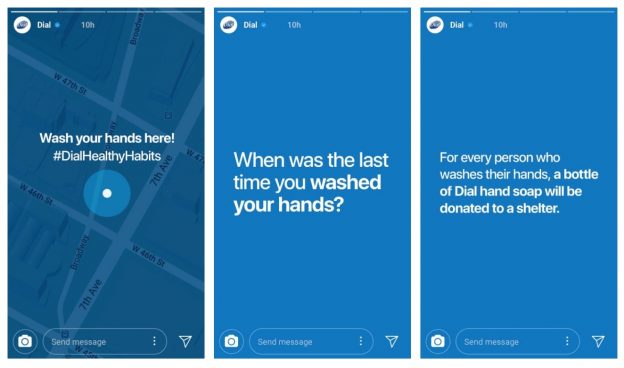
With the rise of social media platforms as powerful tools for reaching audiences, businesses need visually engaging content to stand out amidst the noise.
Graphic designers create eye-catching graphics for social media posts and ads that attract attention and encourage users to engage with the content. The use of compelling visuals in social media marketing helps businesses increase their online visibility, drive website traffic, and generate leads.
Lastly, graphic design has a direct influence on brand perception.
The way a company presents itself visually through its branding materials shapes how it is perceived by consumers.
A professional logo design establishes credibility while consistent visual elements across different marketing channels create recognition and trust among customers. High-quality graphics also enhance the perceived value of products or services offered by a business.
Graphic design is far more than just aesthetics; it is an essential element for modern business success.
Its impact on consumer behavior through visual storytelling, its importance in advertising campaigns, its role in social media marketing, and its influence on brand perception are all critical factors that businesses must consider.
Investing in professional graphic design services allows companies to effectively communicate their message, engage with their target audience, and ultimately drive business growth.
Graphic Design for Different Business Types
A diverse range of industries benefit from the strategic implementation of graphic design to enhance their brand image and effectively communicate with their target audience.
In the world of e-commerce, graphic design plays a crucial role in creating visually appealing websites, product images, and promotional materials.
With the increasing competition in online retail, businesses need to stand out and capture the attention of potential customers. Through creative graphics and well-designed user interfaces, e-commerce companies can create an immersive shopping experience that engages customers and increases conversion rates.
In the healthcare industry, graphic design is essential for conveying complex medical information in a clear and accessible way. From designing brochures and infographics to developing intuitive user interfaces for healthcare apps, graphic designers play a vital role in simplifying medical concepts for patients and healthcare professionals alike.
By using visual elements such as icons, charts, and illustrations, graphic design helps improve understanding, enhances patient engagement, and ultimately leads to better health outcomes.
The hospitality industry relies heavily on visual appeal to attract guests. Whether it’s designing eye-catching logos for hotels or creating stunning menus for restaurants, graphic design helps establish a strong brand identity that sets businesses apart from competitors. Additionally, graphics are used extensively in promotional materials like advertisements and website banners to entice travelers into choosing specific accommodations or dining experiences.
Lastly, fashion relies heavily on aesthetics and visual storytelling. From clothing labels to fashion magazines and online stores, graphic design is crucial in capturing the essence of a brand’s style through imagery.
Fashion designers collaborate closely with graphic designers to create visually striking lookbooks that reflect their vision while appealing to consumers’ senses.
Overall, whether it’s in e-commerce, healthcare, hospitality, technology, or fashion, graphic design plays a vital role in enhancing brand image and effectively communicating with target audiences. Through visually appealing designs and strategic implementation, businesses across various industries can leverage graphic design to stand out from their competition and connect with consumers on a deeper level.
Conclusion

In conclusion, graphic design is a vital element for modern business success.
It goes beyond aesthetics and plays a crucial role in building a brand image, promoting businesses, and connecting with the target audience. By investing in professional graphic design services, companies can enhance their visibility, communication, and credibility, ultimately leading to growth and increased revenue.
Engage your customers and create a strong presence for your brand in their minds with striking graphic design. Reach out to us today to get started.
Frequently Asked Questions
How can graphic design contribute to building trust and credibility for a business?
Graphic design enhances brand perception by communicating professionalism, building an emotional connection, and creating a memorable brand image. It differentiates businesses from competitors through visually-oriented designs that engage audiences and appeal to their subconscious desire for control.
What are some examples of effective graphic design in marketing and advertising?
Examples of effective graphic design in marketing and advertising include impactful branding that creates a strong visual identity, engaging social media content that captures attention, memorable packaging that stands out on store shelves, effective website design that enhances user experience, and eye-catching print advertisements that draw viewers in.
How does graphic design help in establishing a strong visual identity for a brand?
Graphic design plays a crucial role in establishing a strong visual identity for a brand. It emphasizes the importance of branding, utilizes visual storytelling techniques, ensures consistency and recognition, creates an emotional connection with the audience, and helps differentiate from competitors.
Can you provide some tips for choosing the right graphic designer for a business?
When choosing a graphic designer for your business, consider their industry experience, portfolio review, and communication skills. Additionally, budget considerations should be taken into account to ensure a good fit for your needs.
Are there any specific considerations for graphic design in different types of businesses, such as retail versus technology?
In the hospitality industry, graphic design plays a crucial role in creating visually appealing menus, brochures, and promotional materials. In the automotive industry, it helps create sleek and attractive designs for advertisements and product packaging.
In the healthcare sector, graphic design is used to convey important medical information in a clear and visually engaging manner. In the fashion and beauty sector, it is essential for creating captivating logos, product packaging, and advertising campaigns. In the food and beverage industry, graphic design assists in designing eye-catching menus, labels, and branding materials that entice customers.



